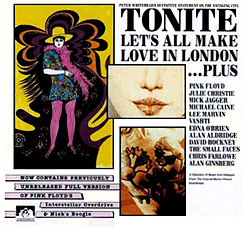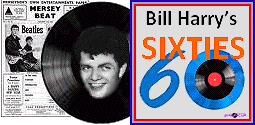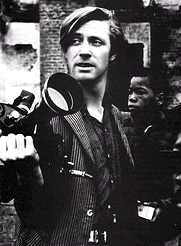 |
Intercut
between the music sequences are interviews with Mick Jagger, ("I don't
see it as my job to change the world!"), Michael Caine, (some hints
at Pop Art Seduction - "At least I never ask!"), Julie Christie, ("This
is where it's all happening!"), Donyale Luna (you
don't remember her? A peach!), Lee Marvin on the set of the film Dirty
Dozen, (wondering what's under the mini-skirts), Edna O'Brien, ("A girl
can't just go off alone across bloody Africa - or if she does, she'll
come back pregnant or something!"), the Pop artist Alan Aldridge, and
various snap interviews with people in clubs like Tiles or posturing
on the streets - like Carnaby Street and the Kings Road. This unique
film not only captures the excitement of that historic era - but also
manages to capture most of the themes of the prevailing zeitgeist -
and does so with great cinematic invention and style.”
There is footage of John Lennon, Mick Jagger, Vanessa Redgrave, Lee
Marvin, Julie Christie, Allen Ginsberg, Yoko Ono, Eric Burdon and Michael
Caine attending one of the Pink Floyd’s concerts. The muli-talented
Whitehead was born in Liverpool on 8th January 1937 and, while at Cambridge
University, he worked for Francis Crick, the co-discoverer of DNA. Poet
Laureate Ted Hughes wrote a poem about him, ‘The Risen’, and he acted
alongside Ian McKellan and Peter Cook in the theatre. He turned down
the opportunity of studying at the Slade School of Art, deciding instead
to learn filmmaking under the tutelage of British director Thorold Dickinson.
|
 by
by





